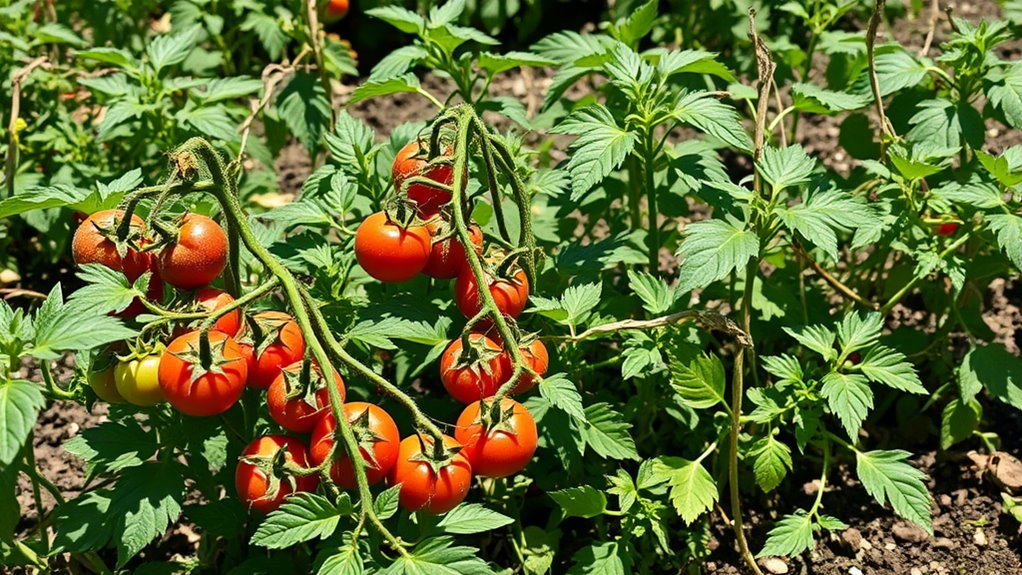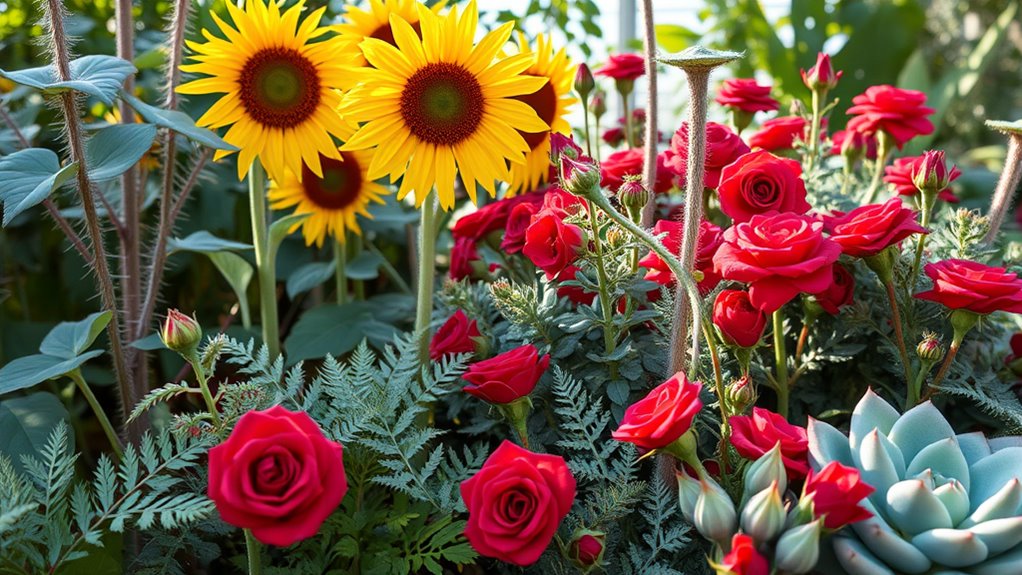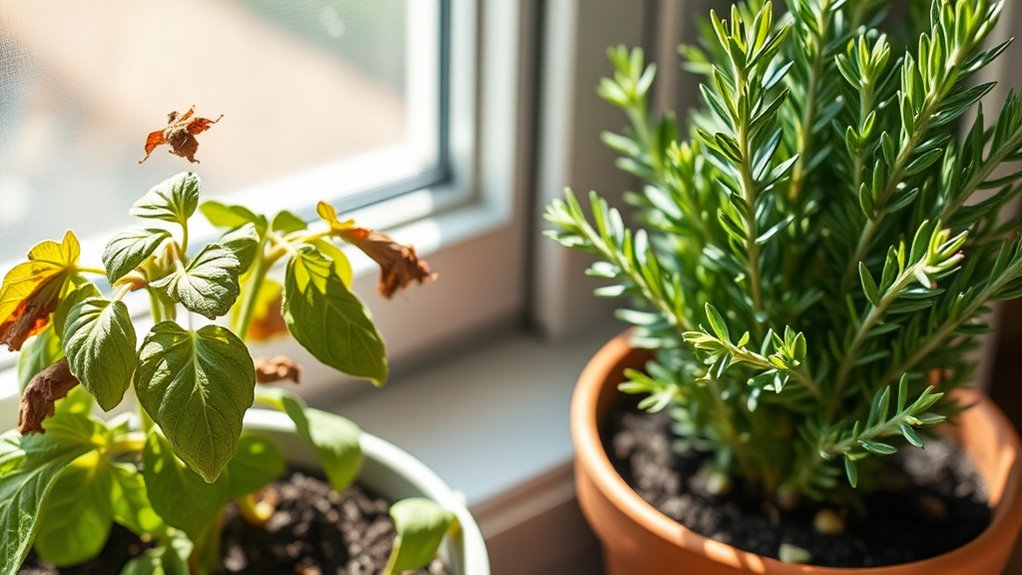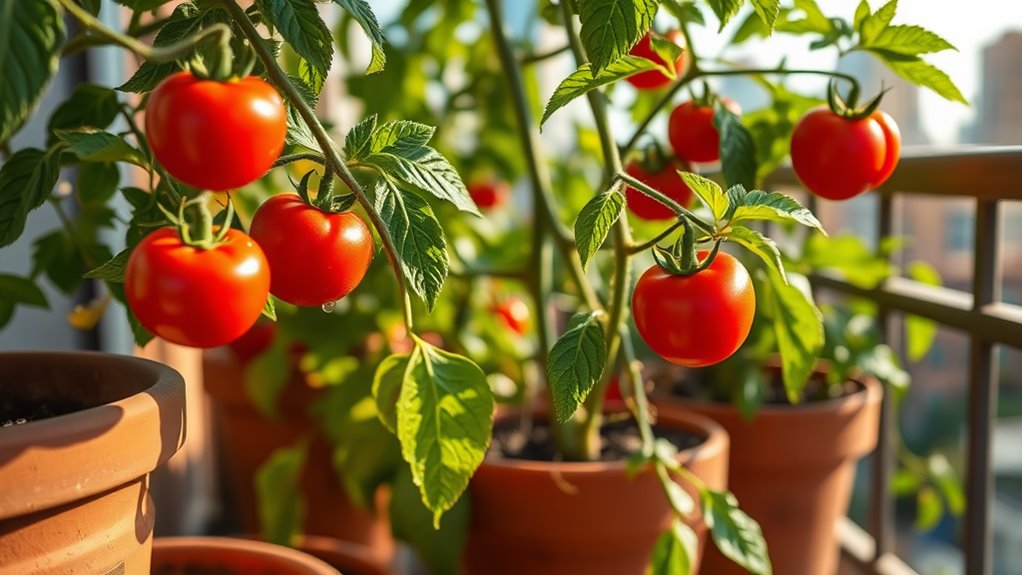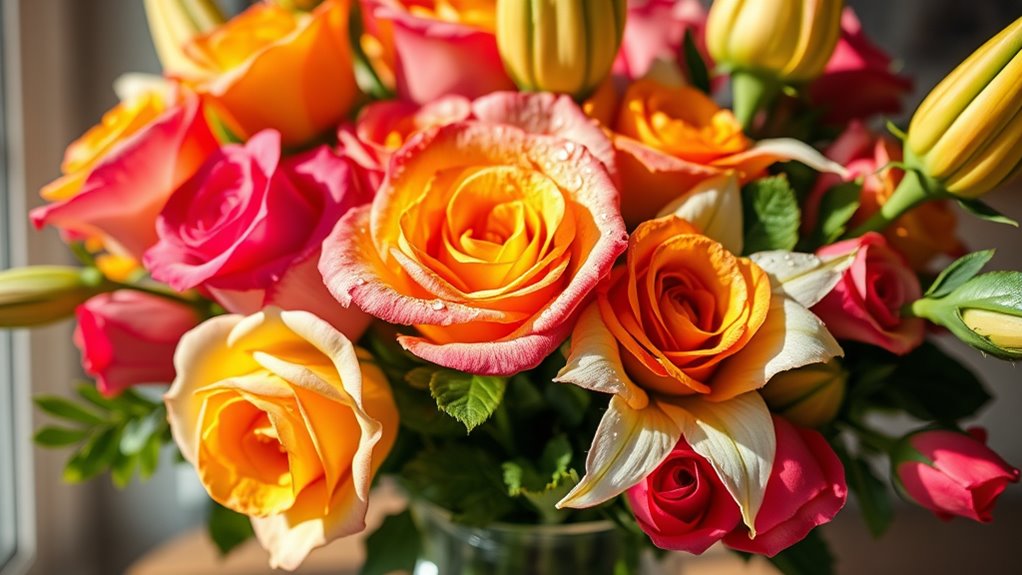Don’t Plant These Vegetables Together – Here’s Why!
When planning your garden, don’t plant tomatoes with potatoes—they compete for nutrients and share pests, leading to weaker plants and lower yields. Beans and onions clash too, as they vie for soil resources and stunt each other’s growth. Carrots near dill attract damaging flies, while brassicas and strawberries create conflicts that harm overall health. Avoiding these pairings keeps your garden thriving and productive, so explore these strategies for even better results.
Key Takeaways
- Tomatoes and potatoes should not be planted together as they share diseases and pests, weakening garden health.
- Beans and onions compete for nutrients, leading to stunted growth and reduced yields.
- Avoid planting brassicas near strawberries to prevent growth conflicts and potential harm to plants.
- Dill and carrots attract the same pests, increasing infestation risks and damaging crops.
- Incompatible pairs like basil and tomatoes can disrupt garden balance, causing competition for resources and lower productivity.
Incompatible Vegetable Pairs
When planting your garden, avoid incompatible vegetable pairs that can compete for resources, spread diseases, or hinder growth. For instance, effective companion planting strategies can help prevent these problems and enhance overall garden success.
In companion planting, you shouldn’t pair tomatoes with potatoes, as they often clash. Don’t combine beans and onions, which make poor neighbors.
Steer clear of brassicas alongside strawberries, and keep corn away from celery.
By identifying these incompatible duos in your companion planting plans, you’ll maintain a balanced garden layout.
Remember, thoughtful companion planting means selecting harmonious plants to maximize space and health without risking conflicts.
Focus on these key avoidances for practical results.
Moreover, these incompatible pairings can lead to issues like disease spread, affecting overall garden vitality.
Reasons to Avoid These Combinations
You might ask why certain vegetable pairs clash, and it’s because they compete for nutrients, invite pests, or stunt each other’s growth—for instance, tomatoes and potatoes share diseases that weaken both plants.
When you plant rivals together, they drain soil resources faster, leaving your garden depleted and yields poor.
Pests like aphids thrive in these setups, spreading quickly and damaging crops you worked hard for.
By avoiding such combinations, you’ll foster healthier plants, reduce chemical needs, and maximize space efficiently, ensuring a bountiful harvest without unnecessary struggles. In contrast, embracing companion planting can help boost your garden’s overall productivity and pest resistance.
Stay vigilant to keep your garden thriving.
For deeper insight, be aware that this includes six specific vegetables known to negatively impact each other’s growth when planted together.
Common Conflicts in the Garden
When you plant incompatible vegetables together, you’ll often attract pest problems that damage your crops.
These pests can thrive in the conditions created by certain combinations, making it harder to protect your garden.
Disease conflicts also arise, where one plant’s vulnerabilities spread to others, compromising your overall yield.
Pest Problems
While certain vegetable pairings boost garden health, incompatible ones often attract pests that can devastate your crops.
For instance, planting beans near onions draws aphids, as both release compounds that lure these insects, leading to rapid infestations.
You might also find that tomatoes and potatoes share pests like the Colorado potato beetle, which hops between them, multiplying quickly.
To avoid this, space out these plants or use companion planting wisely—pair beans with carrots instead, which deter pests naturally.
Always monitor your garden closely; early detection lets you act fast and protect your harvest effectively.
Disease Conflicts
Beyond pest problems, disease conflicts emerge when incompatible vegetables share space, as pathogens like fungi or bacteria easily spread between susceptible plants. You can prevent this by avoiding high-risk combinations, which weaken your garden’s health and yield. For instance, certain pairings invite specific diseases, making rotation or separation essential.
| Incompatible Vegetables | Common Disease |
|---|---|
| Tomatoes and Potatoes | Blight |
| Cucumbers and Melons | Powdery Mildew |
| Beans and Onions | Bacterial Wilt |
| Carrots and Parsnips | Root Rot |
Always check for signs early; it helps you maintain a thriving garden effortlessly.
Effects on Plant Health and Growth
Planting incompatible vegetables together often harms their health and growth, as competition for nutrients and space can weaken roots and stunt development. Many gardeners fall into common mistakes by overlooking proper plant pairings, which can exacerbate these issues.
You might notice your plants struggling, with reduced vigor and smaller yields due to aggressive root systems hogging resources. This competition stresses plants, making them more susceptible to pests and environmental challenges, ultimately slowing photosynthesis and delaying maturity.
To keep your garden thriving, prioritize spacing that allows each vegetable ample room and nutrients, ensuring robust growth and healthier harvests without unnecessary conflicts.
For better outcomes, consider companion planting to promote mutual benefits and improve overall garden productivity.
Specific Examples of Bad Pairings
You might think some vegetable pairings are harmless, but you’ll want to avoid planting tomatoes with potatoes to prevent disease spread.
Keep beans away from onions, as they compete for nutrients and stunt growth.
Steer clear of carrots and dill too, since they can attract the same pests and harm each other’s yields.
Also, avoid planting basil near tomatoes, as it might disrupt garden balance despite the benefits, considering pest resistance.
Tomatoes and Potatoes
Although tomatoes and potatoes both belong to the nightshade family, growing them together often invites shared pests like the Colorado potato beetle and diseases such as late blight, which can devastate both crops and reduce your harvest.
You risk spreading fungal infections through soil and foliage, making it harder to control outbreaks. To avoid this, plant them in different areas of your garden; this prevents nutrient competition and eases pest management.
You’ll protect your yields by rotating these crops annually, ensuring healthier plants and minimizing disease cycles for better overall garden productivity.
Beans and Onions
Beans and onions make a poor garden pairing, as their root systems compete aggressively for nutrients and water, stunting growth in both.
You’ll notice beans’ nitrogen-fixing habits conflict with onions’ demand for consistent moisture and space, leading to reduced yields and weaker plants.
For instance, bush beans may overshadow onion bulbs, causing them to bolt prematurely, while onions’ sulfur compounds can inhibit bean pod development.
To optimize your garden, separate these crops by at least a few feet or use raised beds. This prevents nutrient depletion and ensures healthier, more productive vegetables for you.
Carrots With Dill
Carrots and dill often clash in the garden, as dill’s rapid growth shades carrot roots and attracts pests like carrot flies, which stunt development.
When you plant them together, dill’s expansive foliage blocks sunlight, hindering carrot maturation, and its scent lures harmful insects, leading to lower yields. This not only affects your harvest but also increases the need for pest control, making gardening more labor-intensive.
To maximize your garden’s potential, avoid this combination and consider these practical tips:
- Maintain optimal sunlight by keeping dill at least 2 feet away from carrots to prevent shading.
- Reduce pest risks by isolating dill, as it draws carrot flies that damage roots.
- Minimize nutrient competition by avoiding plants that vie for the same soil resources.
- Boost overall health by selecting better companions, like onions, which deter pests without conflict.
Tips for Better Planting Choices
When you’re planning your garden, choosing compatible vegetables helps prevent issues like pest problems or poor growth. To make smarter choices, research companion planting guides first; for example, pair basil with tomatoes to deter pests naturally. Additionally, explore perfect plant pairs to further enhance your garden’s ecosystem.
Group plants by similar needs, such as sunlight and water requirements, to optimize space. Avoid overcrowding by considering mature sizes, and rotate crops yearly to reduce soil-borne diseases.
Test your soil’s pH and nutrients, then select varieties that thrive in those conditions. Monitor your garden regularly and note what works, adjusting for better yields next season.
By implementing these strategies effectively, you can achieve a bountiful harvest to enhance your garden’s overall productivity.

